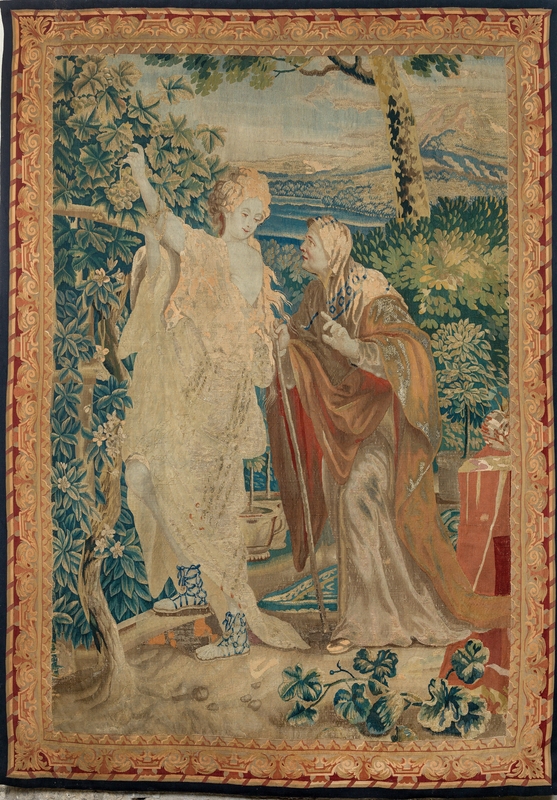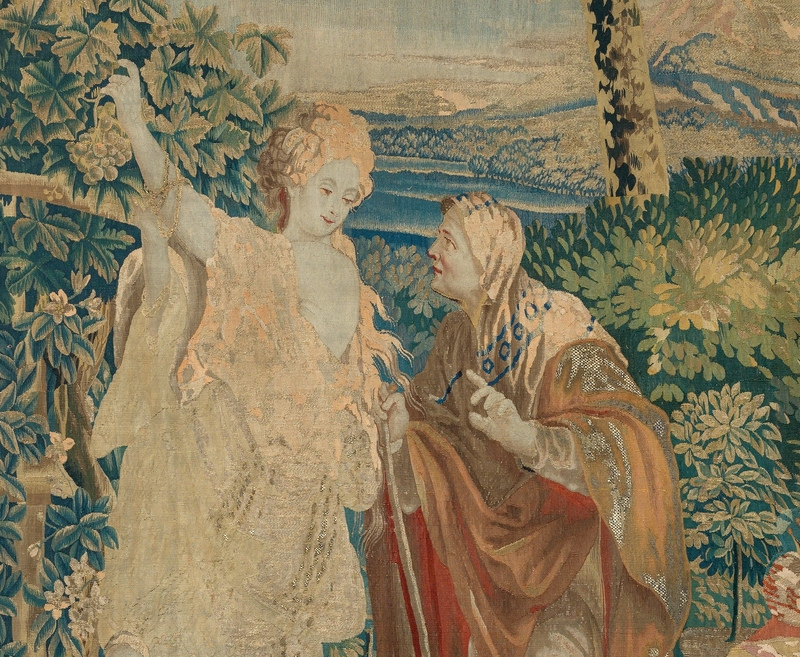The theme of this tapestry is a scene from Vertumnus and Pomona in Ovid’s Metamorphoses. Designed by Pieter Spierincx and Peter Ijkens, from Antwerpen. The design responded to the increased competition from the rising French industry, both from Beauvais and the newly reopened Gobelins (1699) with its commercially orientated sets.
The Flemish weavers had to adapt and make amendments to their compositions, and the intricate historical and mythological series was abandoned. Ovid’s Metamorphoses was very suitable because the designs were more flexible to the taste and wishes of the customers, who could choose the scenes and numbers of tapestries they desired in the set.
We do not know the name of the workshop where the piece was produced, but the substantial amount of metal (gold or silver) thread tells us it is likely to have been made in either Brussels, Paris or Beauvais, places supplying the high-end market. A very similar piece, now found in Berkely Castle England, is from Jan Cobus’ workshop in Brussels. Possibly the Akershus Castle tapestry was produced by Jan Cobus, but more research is needed.
When compared, the Berkeley tapestry gives us an idea of how much of the Akershus piece is missing and was cut away. Luckily only the border and the very top seems to be gone. The top could have been cut off due to damage, or it may very well have been eliminated from the initial design, maybe to make the tapestry measure a certain hight.
Still surviving business records show that many sets of Landscapes with Mythological scenes were marketed and sold in Europe around 1700, the first to be commissioned in 1695, which gives us a date for the design. The genre like quality of these sets has made them less appealing for art-historic investigation. However, precisely this type of tapestry was vital for the survival of the workshops in Brussels, Antwerp and Oudenaarde. It was a popular and profitable motive.



